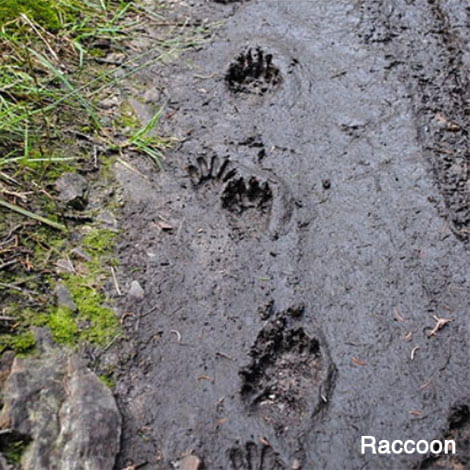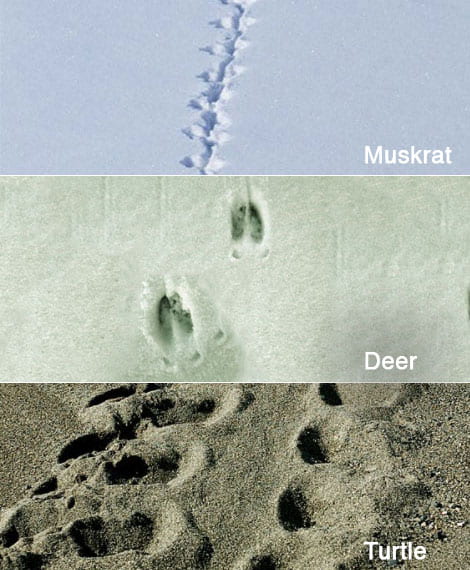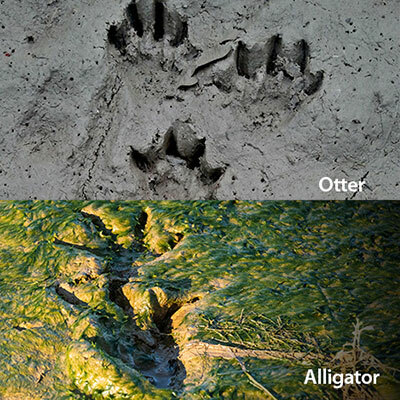Asked By: Shawn of New Hudson, MI
A: Water attracts critters of all shapes and sizes looking for a cool drink or a quick dip. If you find animal tracks around your pond, that's great! It is exciting for wildlife to use it as a natural resource. To help you decipher what's leaving behind those tracks, here's a quick rundown of the most common pond animals in North America:
Raccoons: These little masked bandits are very intelligent and have dexterous front paws, which they use to manipulate objects. They leave flat-footed footprints with claw marks visible on all the toes. Their front and opposite hind foot tracks will be side by side or close together.
Muskrats: Measuring up to two feet long and covered in thick dark fur, these semiaquatic rodents live in wetland burrows near the water's edge. They have long, scaley tails that are flattened vertically to help them swim. When looking at muskrat tracks, the hind feet are larger than the front, and you'll see a distinct mark from the tail dragging along the ground.
Deer: Widely distributed across the country, deer prefer to live between forests for cover and grassy fields for food. You'll find deer tracks around your pond when they stop to grab a drink, but they are also decent swimmers. When looking at deer tracks, you'll see the outline of their hooves, which will look like upside-down hearts.
Turtles: Terrestrial and amphibious turtles have short, round, sturdy feet to support their heavy shells. They have long claws that they use to help them clamber onto rocky shorelines and floating logs. Turtle footprints are ovals with toe or claw marks on one side. You'll most likely see turtle tracks near the water, and you may see a tail or shell drag mark, too.
Otters: River otters can visit and hunt in ponds throughout parts of the United States and most of Canada. If you live where these playful critters roam, you may spot their tracks in the mud around your pond or lake. You can identify otter tracks by their webbed toes, distinct claw marks, and slightly slanted walking patterns.
Alligators: If your pond is located in the coastal wetlands of the southeast, you might find alligator tracks along the shore. The largest reptiles in North America, alligators can reach lengths over 17 feet and weigh over 1,000 pounds, although their sizes vary greatly. Alligator tracks are rarely well-defined since their long tails drag and obscure their webbed footprints.
Dealing With Pond Animals
In most cases, these critters will do little or no harm to your pond or lake. However, predatory wildlife in ponds, like otters and alligators, will snack on your fish if given the chance. You can protect your finned friends with predator deterrents if this becomes an issue. All pond animals leave waste behind, which may impact your water quality. Thankfully, excessive waste can be kept in check with aeration and bacteria.
Pond Wildlife Tips & Advice
Are you looking for tips on attracting pond animals or deterring aquatic predators? Contact us online or by phone at 866-766-3435 for friendly advice customized to your situation.
Read more about wildlife in ponds by checking out the following related articles:
Are Muskrats Bad for a Pond?
Bullfrog & Toad Life Cycle
Keep Raccoons Away
Snapping Turtles 101
Attracting Ducks
Snake Hideouts
Last Updated: June 27, 2024



